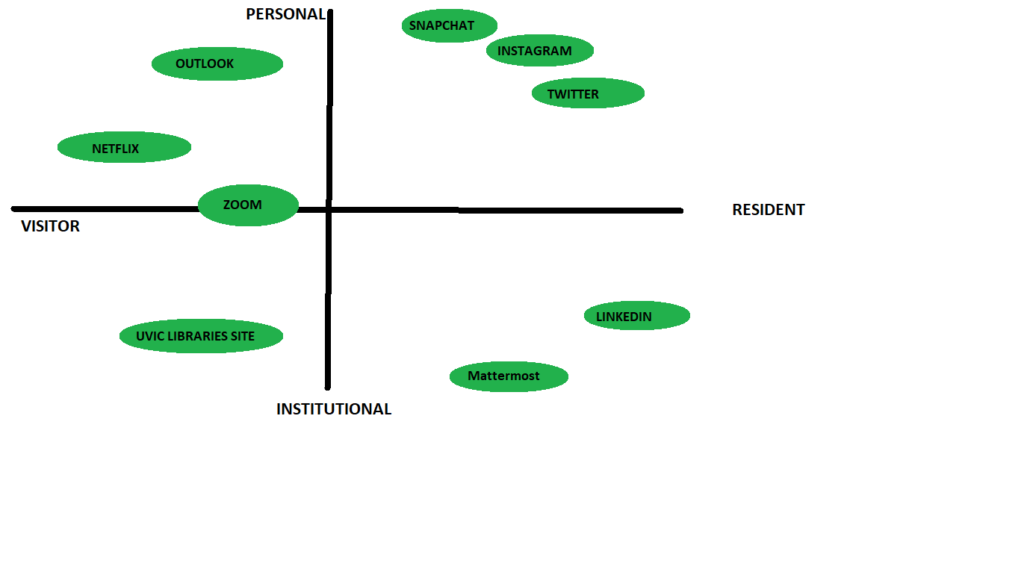What does it mean to network using social media?
Networking is described as the process in which people make mutually beneficial professional and social connections through exchanging information and conversing. While networking has always been around, though likely by a different name. Its undeniable that the appearance of social media and an increasingly online world has increased its importance in todays society tenfold. Networking is a vital part of being successful in many career paths, and often times, being a good networker can yield better results than education or experience. Networking using social media would be to converse and interact with various individuals over sites like Facebook, Instagram, twitter, or LinkedIn to name a few. Social media allows us to maintain connections with people with relatively little effort. Networking over social media can be as simple as liking or commenting on a colleagues or classmates post. We all network on social media in todays day and age we just all do it to varying degrees and for various reasons.
“an essential life–long learning skill they need to develop, is the ability to find and to connect with relevant others, i.e., professional networking” (Johnson, 2008; Nardi, et al., 2000).
How are we motivated to participate in public networks?
We are highly motivated to participate in networked publics as social media progresses further and further. People communicate their opinions more freely online, they date online, they make friends online, they find jobs online, they go to work online. We live in an online world. If you are not participating in these networked publics it is incredibly difficult to keep up with all these aspects of life mentioned above. And with more and more people doing it, so does the social pressure to participate as well increase.
The article What is a Personal Learning Network (PLN)?’ by Gutierrez (2016) discusses how we participate in PLNs all throughout our life, that they are a “life long learning tool” The motivation to participate in public learning networks is so strong because it is something that is inescapable throughout everyone’s life.
What are the risks and rewards of public communications?
As I mentioned before, networking and communicating on public networks can be very beneficial for ones learning and furthering themselves socially or professionally. With that being said there are some obvious risks to public communications as well, the primary one being data security. As we all know Facebook and other social media titans have been accused of suffering data breaches that compromise the private information of millions of people. Anything you post online leaves a footprint, its there forever. In Boyd’s 2012 article on networked privacy the author discusses how our private information is becoming increasingly networked, and how that posses potential challenges for the ethical concerns of having so much information known that many people would wish is not. Public communications in turn come at great social benefit, but one must be cautious in a online world where it is becoming increasingly difficult to protect your private information.
What is digital identity
I would describe digital identity as the face you show your PLN and online world. Your identity can be as vague or as deep as you desire. Your digital identity is everything you present to your social networks. The kinds of pictures you post, the community’s you reside in. The ideas you like and share, all of it compounds into your digital identity. Even in this course we all have a digital identity that we present to each other, though it is just one small section of such it is our identity none the less.
How do personal versus professional approaches to digital identity affect social media use?
Personal and professional approaches to digital identity usually vary greatly. The way you present your identity on say your private Instagram, is likely to be very different the the way you present yourself on your LinkedIn account. The two identity’s serve different purposes. A personal identity allows us to connect with like minded individuals and facilitation socialization to fulfill our needs of connection with other people. Whereas a professional identity is often a much more catered identity which showcases our education and experience in the workforce in order to find more career opportunities. For example, we might use social media in a personal approach to post pictures of our new puppy, whereas we would never do that when trying to use social media in a professional setting. The two identity’s serve two completely unique purposes.
How do digital identities converge in networked publics- what are the impacts and/or benefits?
Digital identities from all over the world can converge in PLNs. Social media while it can be a unhealthy and dangerous tool at times, also connects us like never before. There are tons of benefits from this convergence of identities. Community’s form for every possible niche you can image, people that feel marginalized often times find community and personal connections through this convergence. New ideas are formed, perspectives shared, laughs had. We tend to take for granted many of the connections we have in life as PLNs are so ingrained but ask yourself if you would have many of the connections you do today had it not been for the emergence of social media and PLNs.
References
Boyd, D. (n.d.). Networked Privacy. Retrieved from https://ojs.library.queensu.ca/index.php/surveillance-and-society/article/view/networked
Future Learn. What is a Personal Learning Network (PLN)? (n.d.). Retrieved from https://www.futurelearn.com/info/courses/learning-network-age/0/steps/24644
Gutierrez, K. (n.d.). What are Personal Learning Networks? Retrieved from https://www.shiftelearning.com/blog/personal-learning-networks



Recent Comments